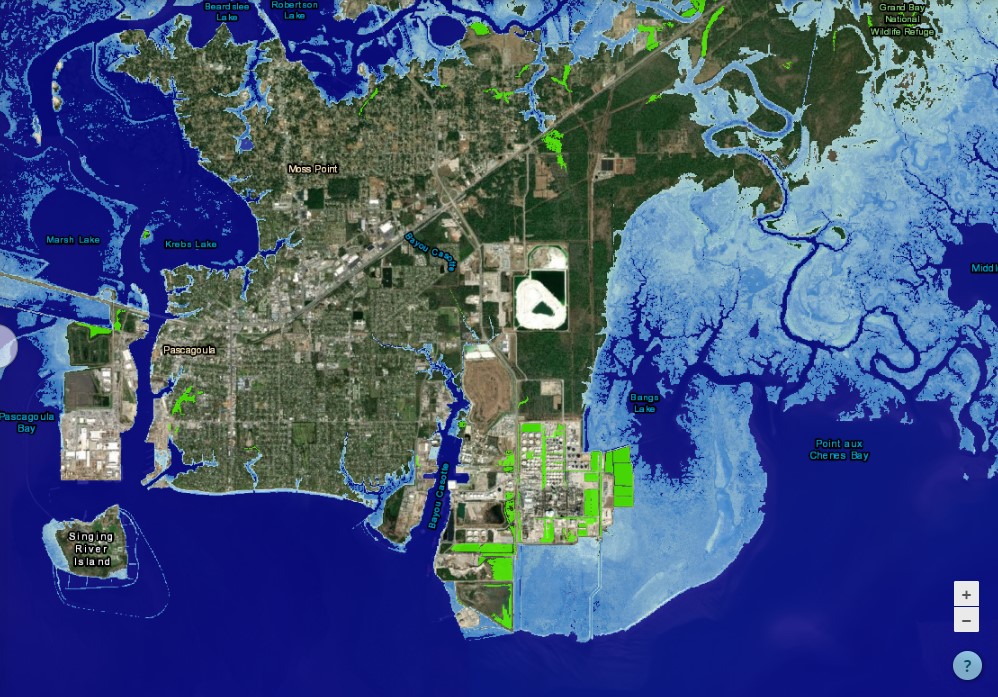Issue
During past hurricanes, two wastewater treatment plants in Jackson County, Mississippi, flooded— completely during Hurricane Katrina in 2005, and partially during Hurricane Nate in 2017. Together, these events caused millions of dollars in damage. With these recent incidents in mind, the Jackson County Utility Authority was faced with a critical decision—where to locate a new facility for collecting, treating, and repurposing wastewater.
Process
The Jackson County Utility Authority facility project team wanted to identify a location for a site that would remain dry for the next 50 years. They used the Sea Level Rise Viewer to see local areas that would not flood under medium-to-high sea level rise scenarios of three to five feet. Through this process, the team was able to decide on a location that would remain safe from floodwaters through 2070. The all-in-one treatment facility is slated to be built over the next several years near Pascagoula’s industrial center.
Impact
Building a facility at the new location will potentially save millions in flood damage. A next step for the project team—combining the sea level rise findings with storm surge data, the latter provided by NOAA’s National Centers for Coastal Ocean Science—will determine the height of any protective berms placed around the new facility.
The authority is partnering with the U.S. Army Corps of Engineers on the project’s conceptual design. Support for the facility includes U.S. Environmental Protection Agency funding under the Water Infrastructure Finance and Innovation Act and $3 million in support through the Consolidated Appropriations Act of 2017. (2019)

